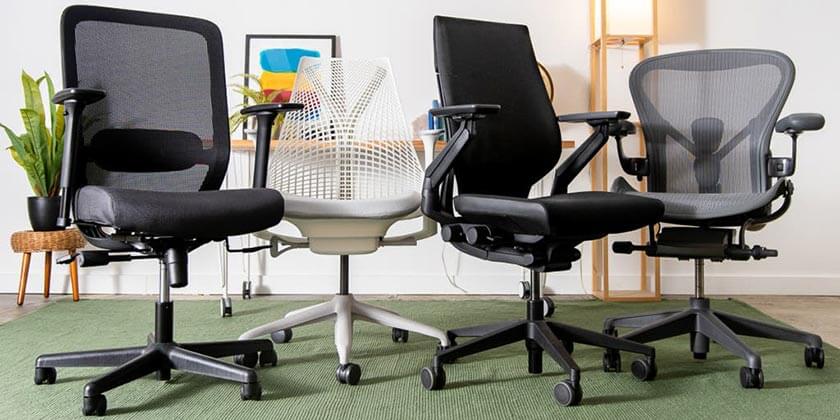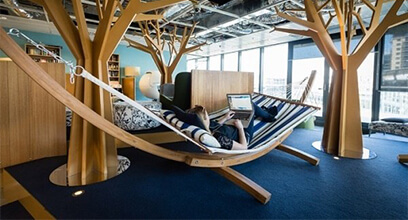How natural light increases work productivity
According to a study conducted at Northwestern University in Chicago (USA), companies that are illuminated with natural light have more active employees, sleep better, perform better and have a better quality of life than others. . As a result, the productivity of the said company increases.
- Offices with natural light
- The relationship between employees' creativity and natural light
- Vitamin D
- The relationship between natural light and eye health
- How natural daylight affects employees
We all know that working calmly in a comfortable space, with light coming from the street, with large windows in offices or with high ceilings and well-distributed light, is much better than doing that work with fluorescent light. It is direct, in small and closed spaces in a range that is demarcated by a partition or desk of colleagues.
The relationship between daylight and workplace productivity has been investigated in several studies, and results show that improving daylight conditions significantly improves productivity while also helping memory function.
Offices with natural light:
An office (even a workplace) that is disorganized, messy, or poorly laid out can cause chaos in our minds as well. Studies have shown that employees who feel uncomfortable and lack peace of mind at their workplace, feel more dissatisfaction and general hatred towards their job every day.
The Northwestern University study tested two groups of 22 people, one in offices with large windows and access to natural light, and the other in a closed space.

The result was that the first group received 173% more light, resulting in them sleeping an average of 46 minutes longer and showing fewer sleep-related problems than the other group; which was higher by improving their quality of life and performance.
In 1980, Dr. Fritz Hallowitz presented research results on the adverse effects of low-spectrum fluorescent tubes on people and concluded that the lack of natural light in people can affect the endocrine system as well as some blood cortisol hormones. influence. More interestingly, not only these people, but people who worked under the influence of this type of artificial light, had changes in mood, behavior and even discomfort. Obviously, this fact has affected the performance and productivity of individuals as an employee.
The relationship between employee creativity and natural light:
Most artists agree that natural light is essential to stimulate creativity. In fact, American author George Bernard Shaw was famous for commissioning a well-lit "writer's cottage" that housed a mechanical turntable. The purpose of the desk was to move it according to where the light moves, so that it is always exposed to natural light when writing.
If we take Shaw's book literally, it can be assumed that the creativity and productivity of the workforce can be greatly improved by installing large windows that expose employees to as much natural light as possible.
Vitamin D:
As we know, vitamin D is essential for human health. Natural light is the main source of vitamin D, and those who do not get enough natural sunlight can often become deficient. Vitamin D deficiency can cause bone, tooth, and muscle problems that can affect other areas of health.
In the workplace, employees suffering from vitamin D deficiency can experience health problems that can affect their productivity. Good health and nutrition are necessary to increase one's ability to concentrate and work well.

The relationship between natural light and eye health:
Research conducted by Professor Alan Hedge at Cornell University in 2017 found that office workers reported a 51 percent reduction in eye strain and a 63 percent reduction in headaches following increased exposure to natural light. Eye strain and headaches can be attributed to a condition called machine vision syndrome (CVS), which is said to affect 70 million workers worldwide. CVS can potentially be significantly reduced by using more natural light in the workplace.
With regard to employee productivity, it is clear that lower incidences of eye strain, asthenopia, and vision-related headaches reduce the number of interruptions. In addition, better eye health means greater focus and productivity at work
Given the significant impact something as seemingly simple as natural light can have on the workforce, it's best that employers try to follow suit. In addition to the productivity and health benefits, remember that natural light is the cheapest option for lighting your office compared to artificial light.
How natural daylight affects employees
Brighten the places where you work using natural light as much as possible; Artificial light cannot reproduce the quality of sunlight, which is a natural antidepressant; So try to use sunlight as your main source of lighting and only integrate it with artificial light when needed.
The final conclusion of Dr. Fritz Holwich's study in 1980 shows that companies should design their offices taking into account the described factors to expose employees to natural light to ensure an active and positive attitude in performing their duties and to In the same way, your quality will improve.
So make sure your company is full of natural light; Arrange desks as much as possible in rooms with windows. In the colder months, keep the curtains open as much as possible to still let natural light into the workplace.

Articles that may be of interest to you:
How to create a shared workspace?
Choosing a color palette in interior design and office decoration
FAQ
The use of natural light in the workplace, in addition to positive effects on people's mood and motivation, has significant effects on people's physical health, which is discussed in detail in the article.
Use LED. If you have to use artificial light in offices, you can use lamps
Research has shown that the pressure on the eyes and pain in the head area can be significantly reduced by using more natural light in the workplace.








Share